
[292] Quercus Robur, Pedunculate Oak – and Other Oaks
Introduction
The genus Quercus has about five hundred species, generally called Oaks, all native to the Northern Hemisphere.
Several related genera also have species called oaks. I have split the genus into two blogs and will look at three fairly common species today – [A] Quercus robur, the Pedunculate Oak, and [B] Quercus petraea, the Sessile Oak, are native species; [C] Quercus ilex, the Holm Oak, has been naturalized in the UK for five hundred years.
I will deal with the rest of Quercus tomorrow.
Taxonomy
Kingdom – Plants
Division – Vascular Plants
Class – Angiosperms (Flowering Plants)
Order – Fagales
Family – Fagaceae
Subfamily – Quercoideae
Genus – Quercus
- Subgenus – Quercus
- Section – Quercus or Lepidobalanus or Leucobalanus (White Oaks)
- About 100 species including …
- Quercus alba – White Oak (North America)
- Quercus petraea – Sessile Oak
- Quercus robur – Pedunculate Oak, Common Oak, English Oak
- Section – Mesobalanus
- Seven species
- Section – Cerris
- About 30 species including …
- Quercus cerris – Turkey Oak
- Quercus ilex – Holm Oak
- Section – Protobalanus (Intermediate Oaks)
- Five species
- Section – Lobatae (Red Oaks)
- About 100 species including …
- Quercus rubra – Northern Red Oak
- Section – Quercus or Lepidobalanus or Leucobalanus (White Oaks)
- Subgenus – Cyclobalanopsis (Ring-supped Oaks)
- About 150 species
Names
Oak comes via Old English from older Germanic roots and has always been the name of the British oak trees. See [B] below for ‘pedunculate’ and ‘sessile.’ Holm is an obsolete form of ‘Holly.’
Quercus is the Classical Latin name for oaks, probably used initially for an Italian species. Robur is another Classical Latin name for a type of oak, cognate with rub- as used for [135] Robin, [136] Redclaws and Red Oak. Petraea means (growing in) rocky places. Ilex is the Latin name of the Holm Oak. You will remember from [185] Holly, that ilex was used indiscriminately for Holly or the Holm Oak. (So, while the Holm Oak seems to get its name from holly, the scientific names seem to go the other way round with ilex coming from the oak.)
Those of you trying to come to grips with Latin may have noticed that Quercus robur and Quercus ilex use nouns in apposition for species epithets rather than adjectives. The adjective in Quercus petraea is feminine. Quercus looks like a regular (second declension) masculine -us ending, but it is actually (fourth declension) feminine.
Acorn comes via Old English æcern from old Germanic roots. It was altered to become more similar to ‘corn.’
[A] Pedunculate Oak
To most people Quercus robur is what we call an Oak but is also known as the Common Oak, English Oak, European Oak or Pedunculate Oak. Its natural range corresponds to Europe except the far south and far north, and it is widely cultivated in other temperate areas. It is in the section of Quercus known as White Oaks.
Many of the largest and oldest trees in England are Pedunculate Oaks. Some very old trees have very thick trunks but are relatively short after being pollarded or coppiced early in their lives. Some British oaks are estimated to be a thousand years old.
The English Oak has traditionally been grown as a source of timber. It has become almost a symbol of England, appearing sometimes in English history. It is the most common woodland tree in England.
The lobe-shaped leaves are familiar as is the acorn and both appear in the symbol of the National Trust.
Like all species of Quercus, it has both male and female flowers. Male flowers are long, thin yellow or green catkins and female flowers are tiny and insignificant.
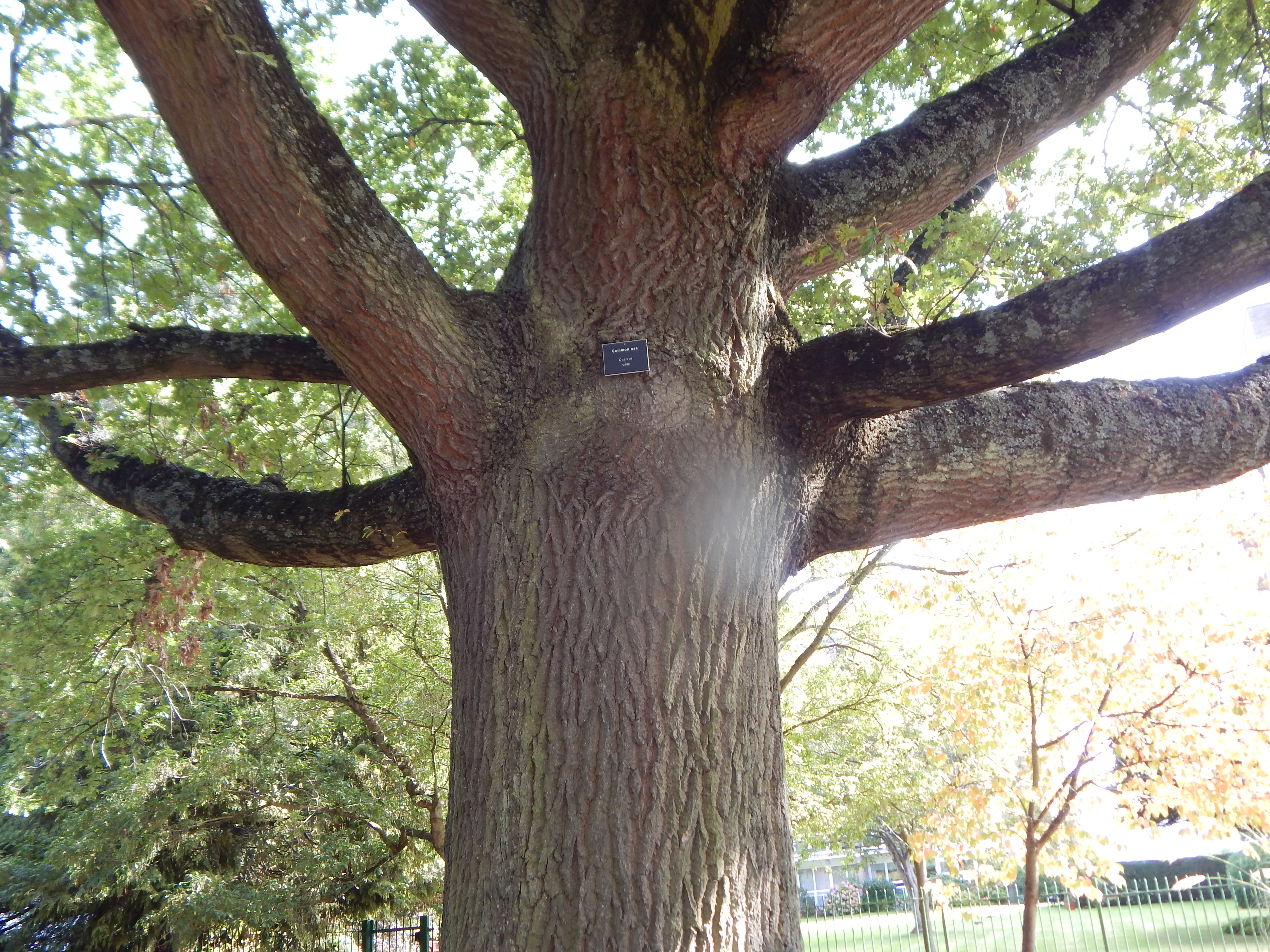

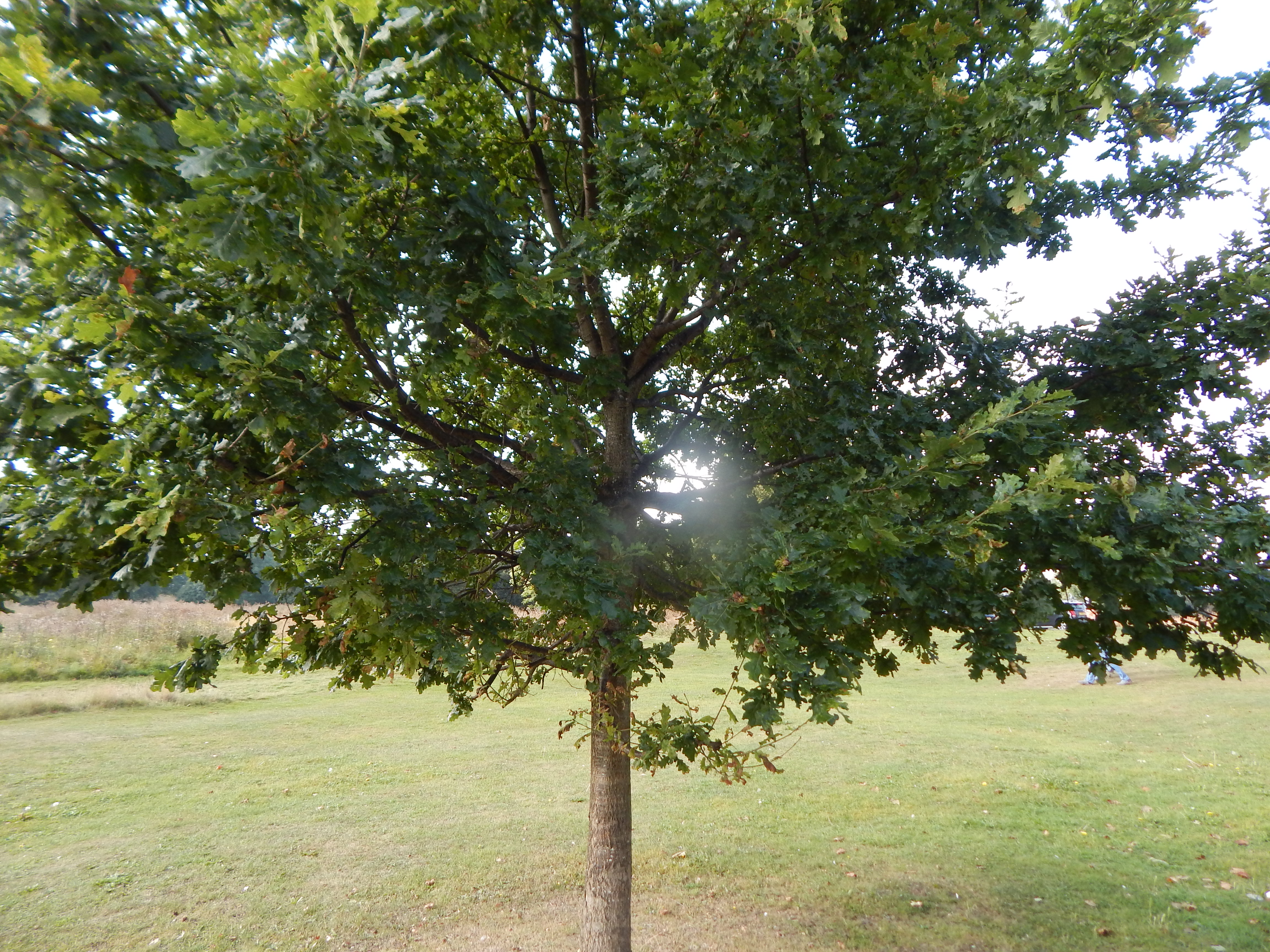
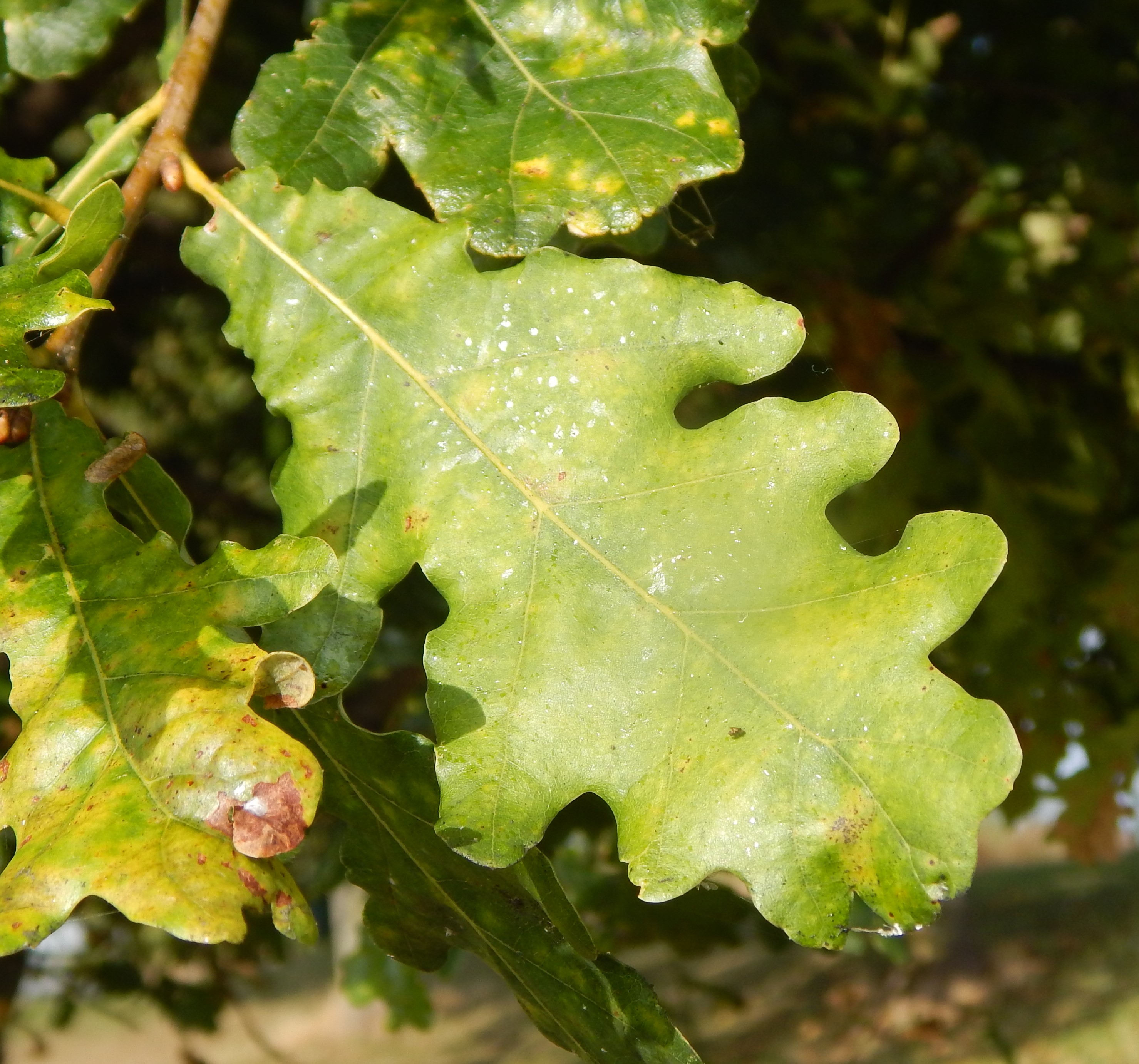
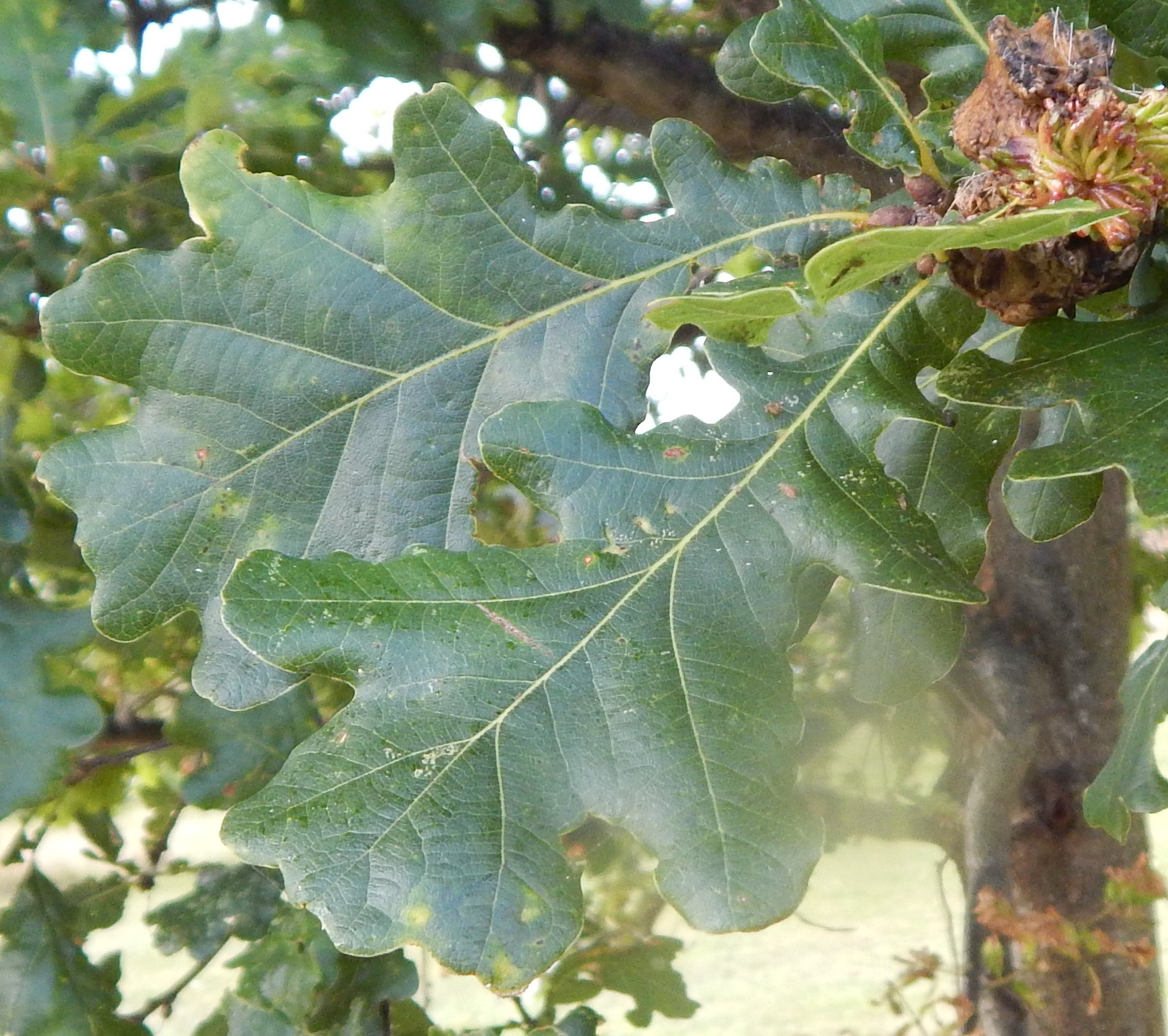
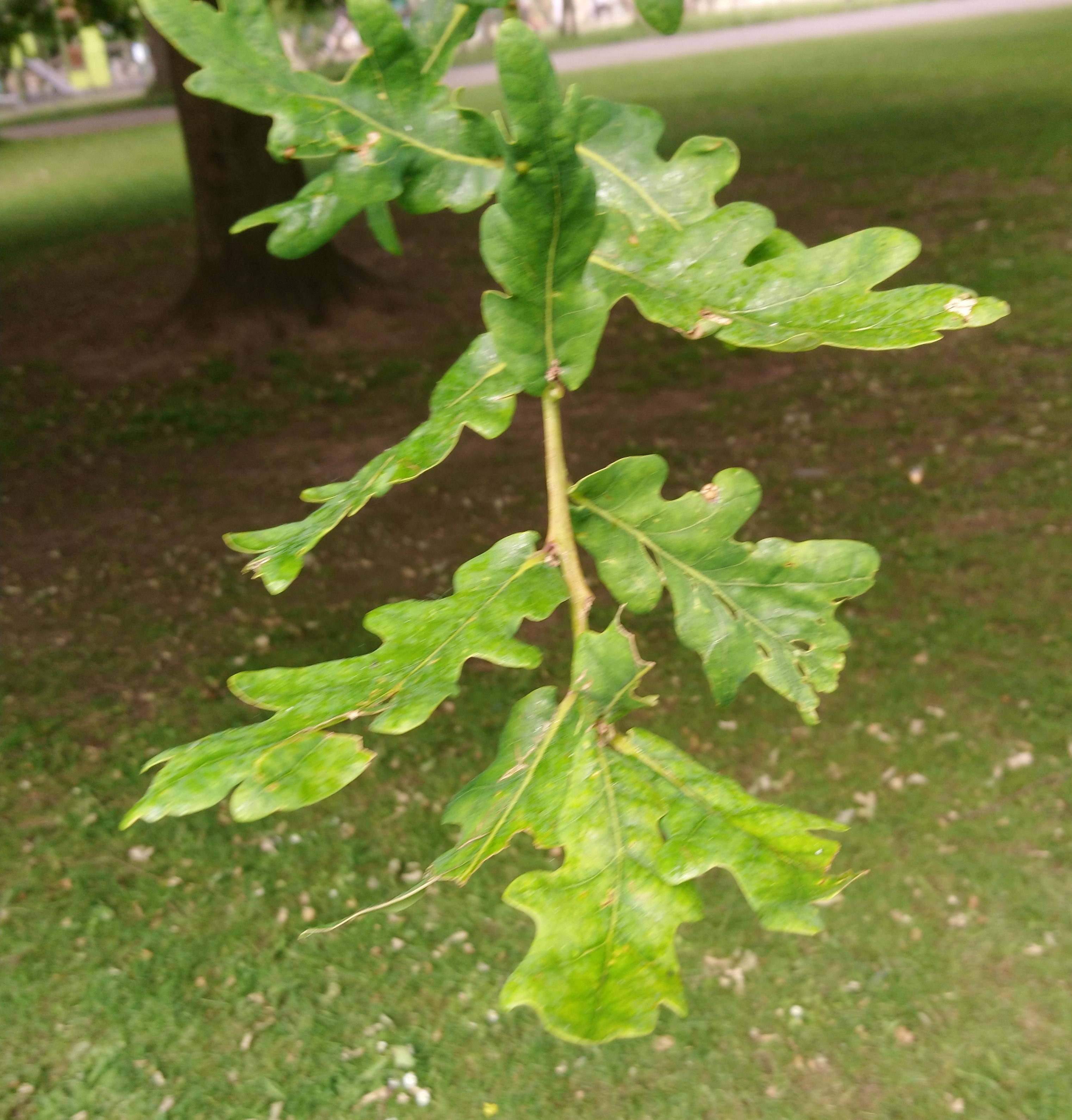

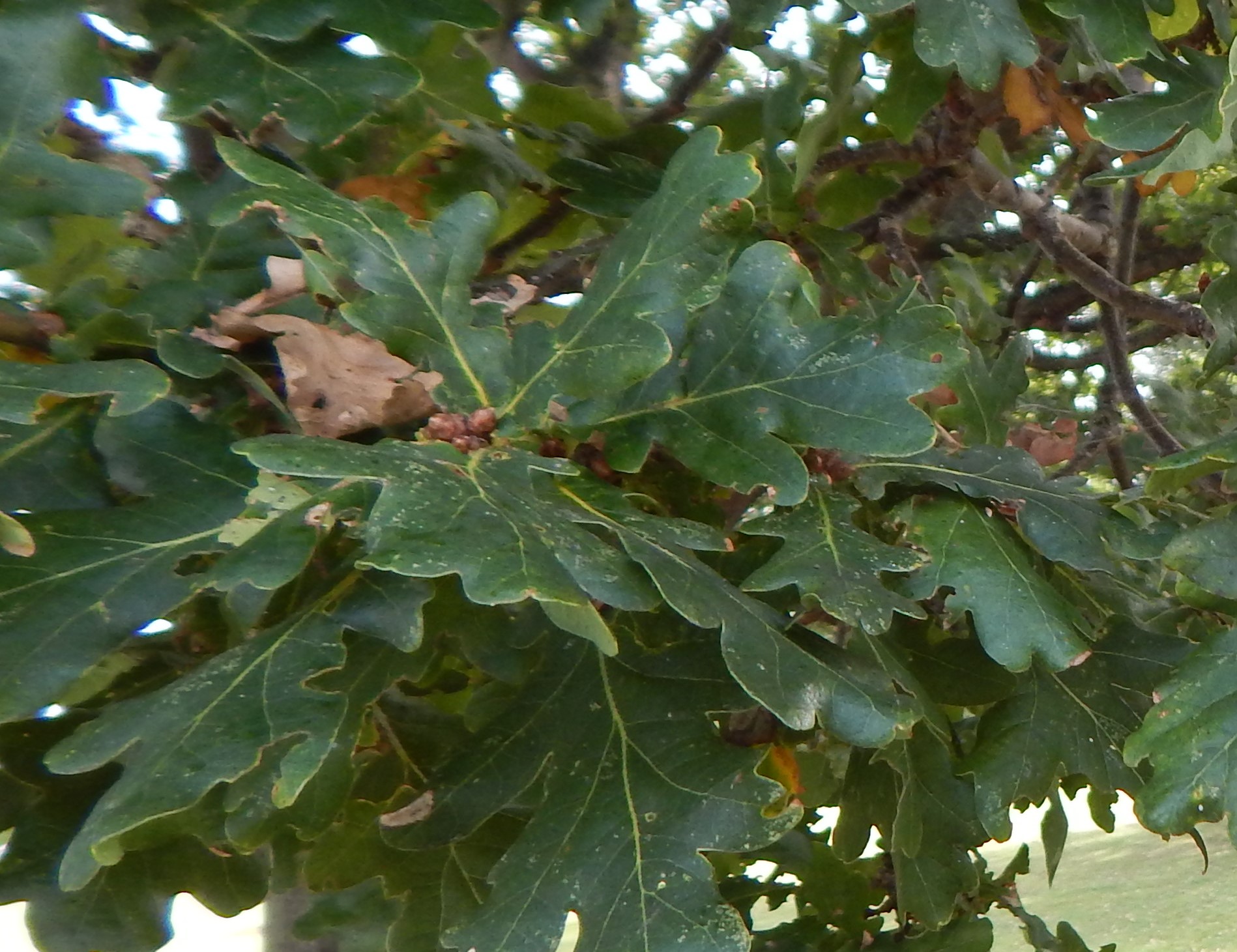
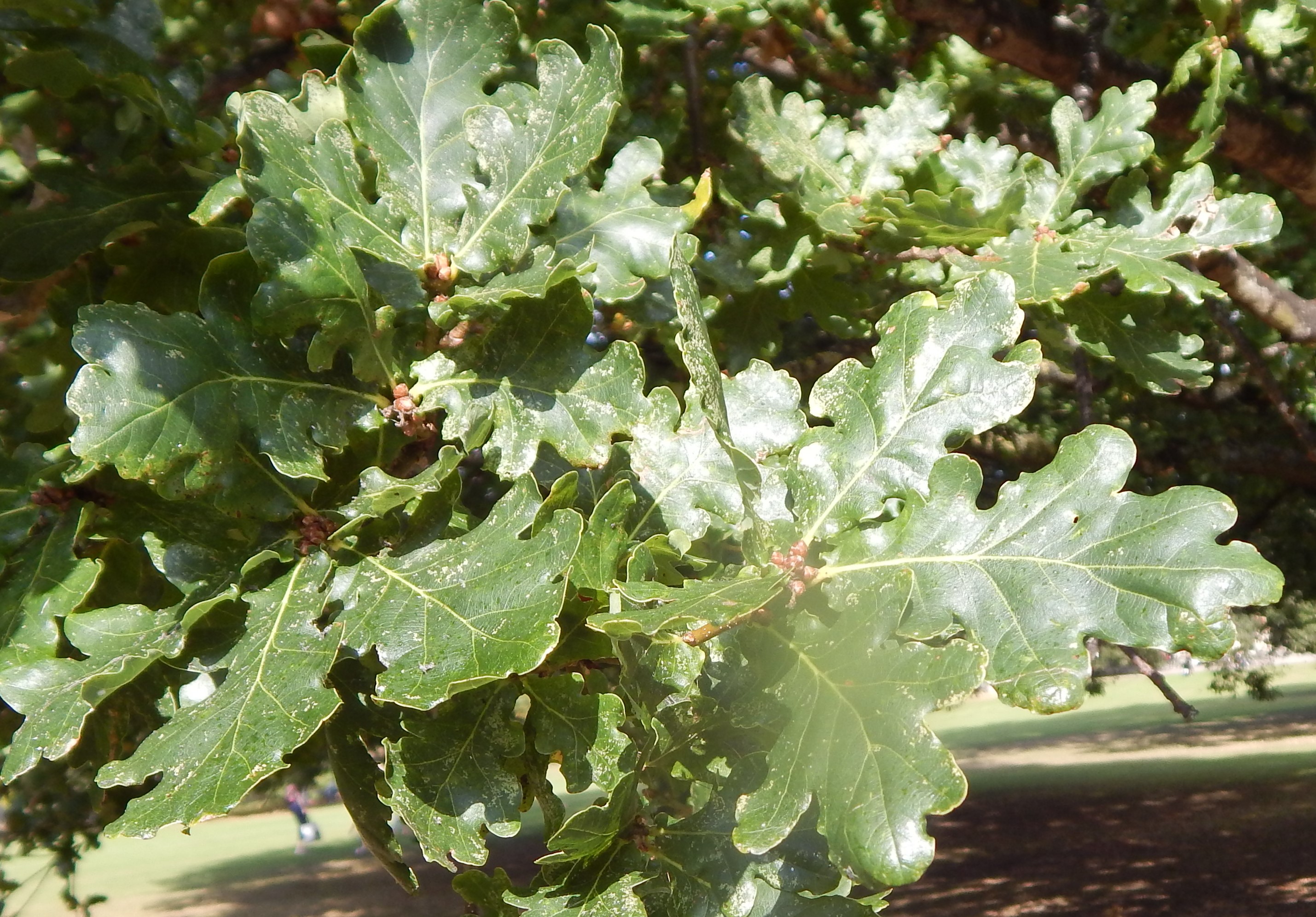


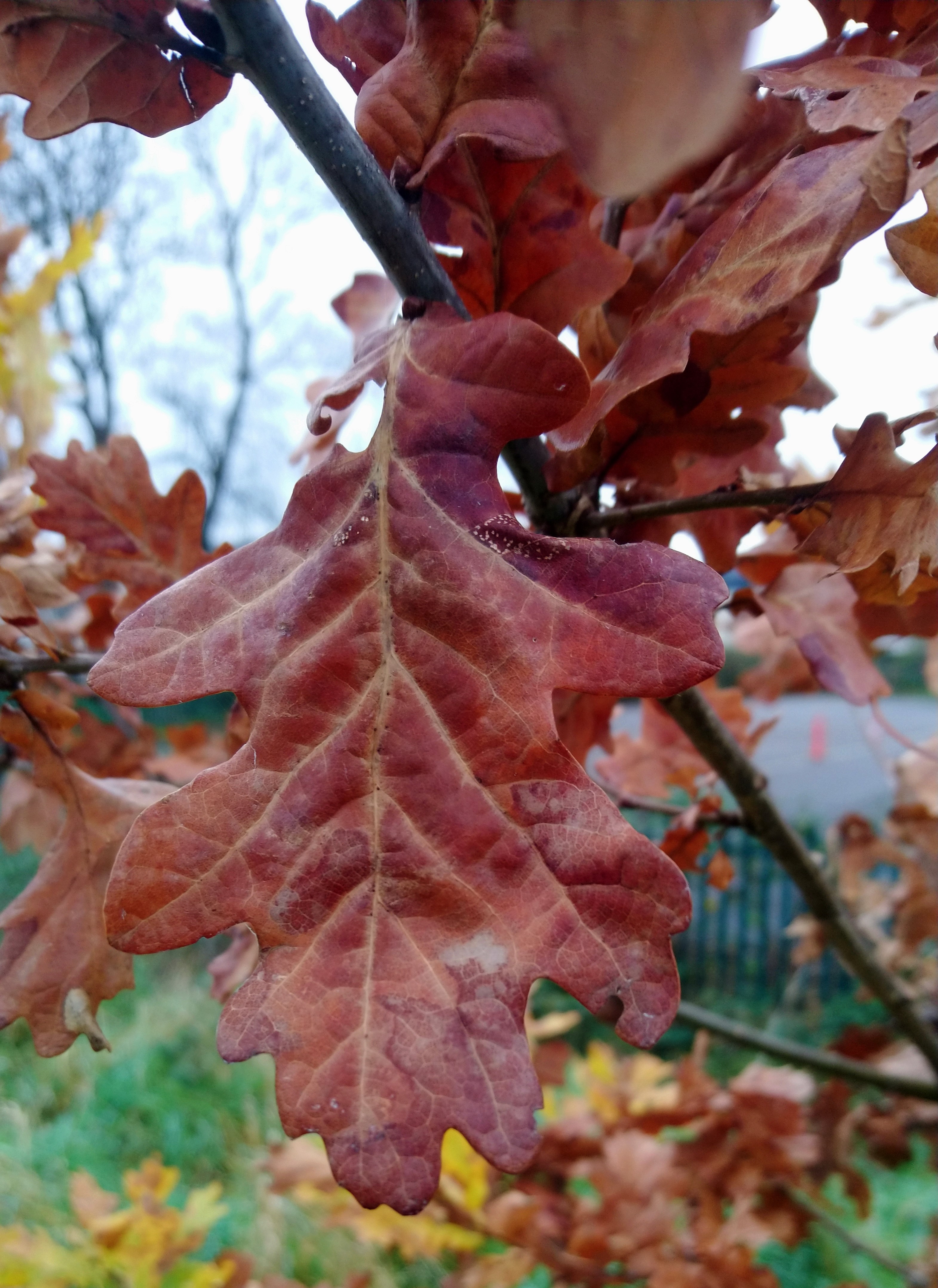
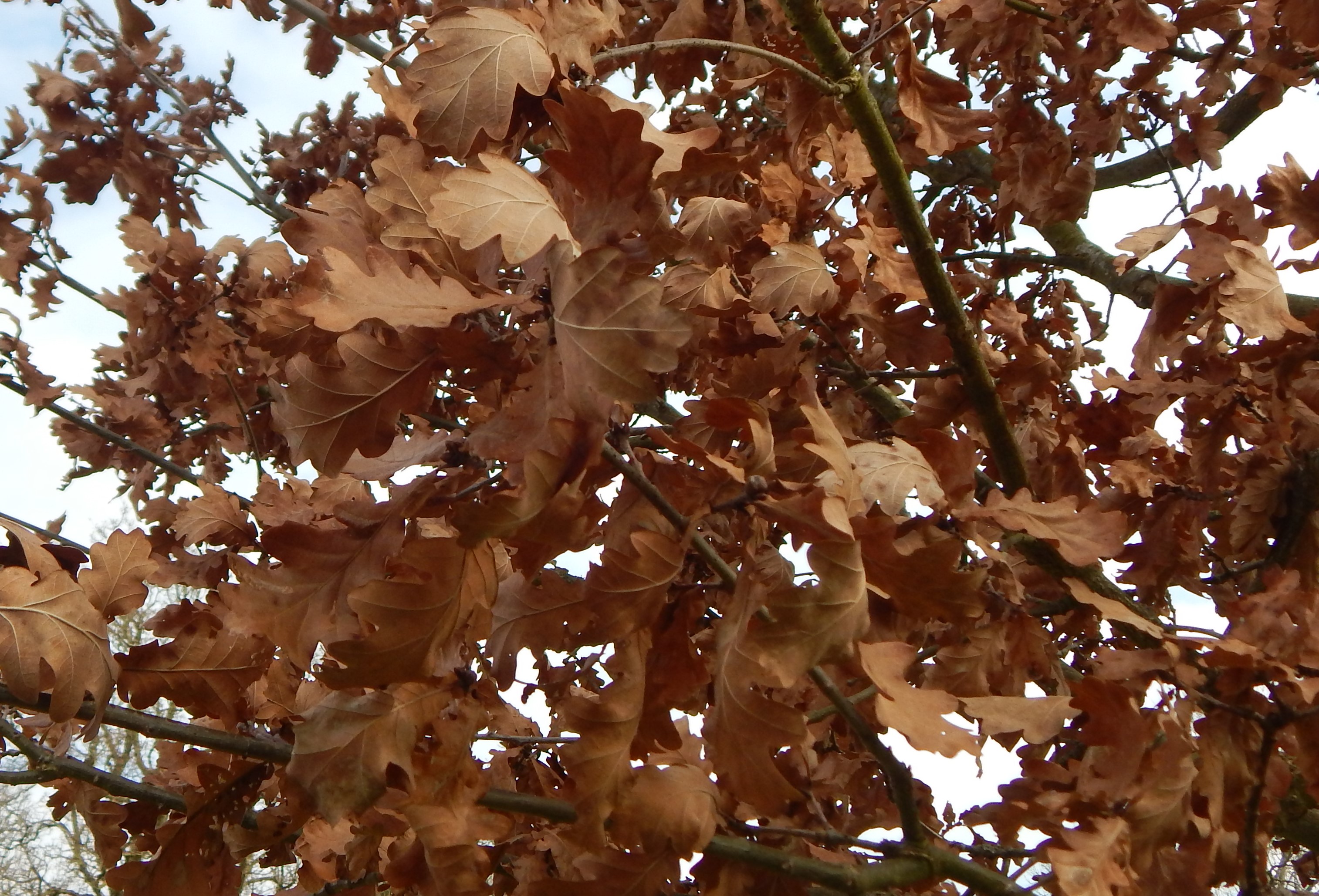
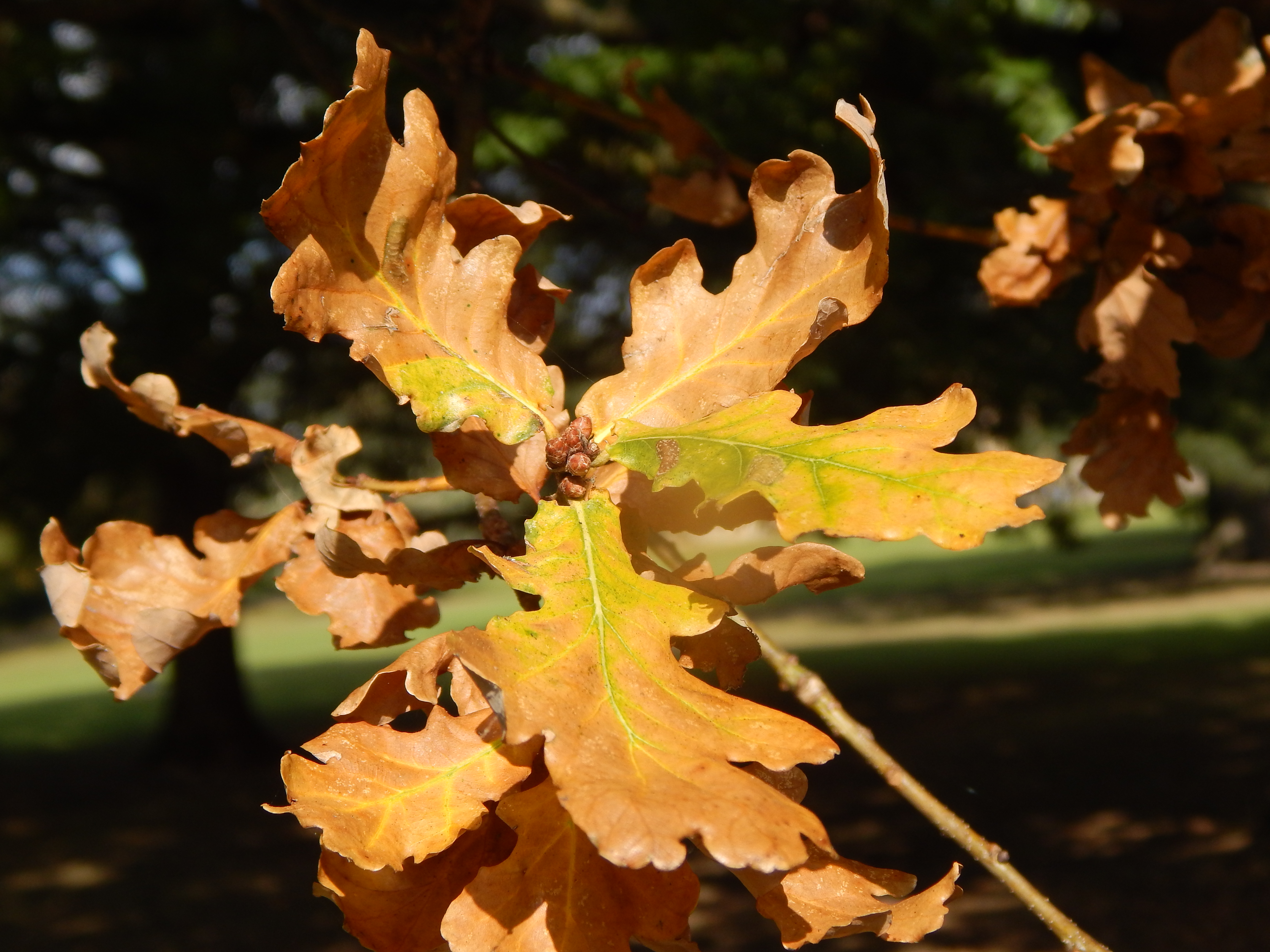
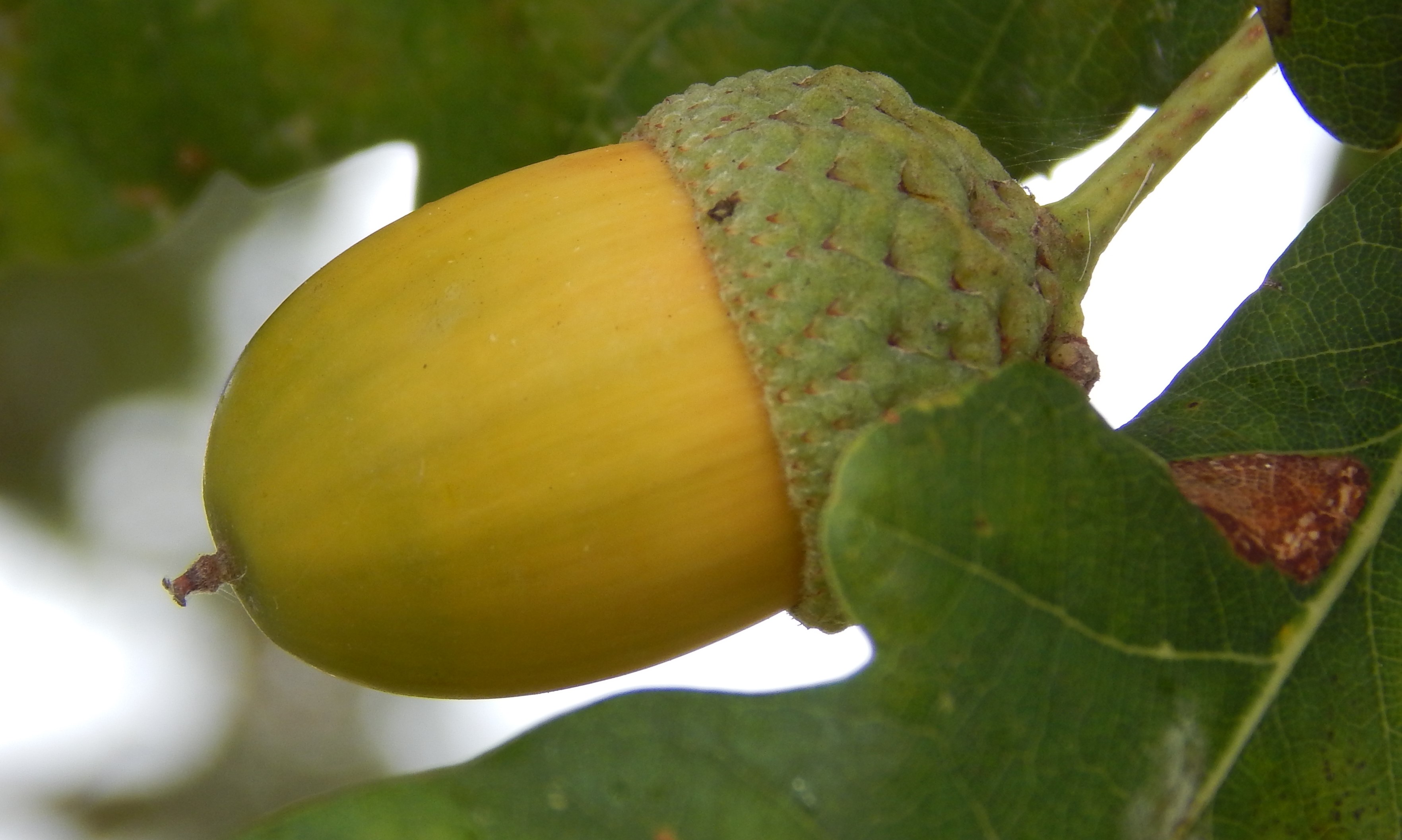
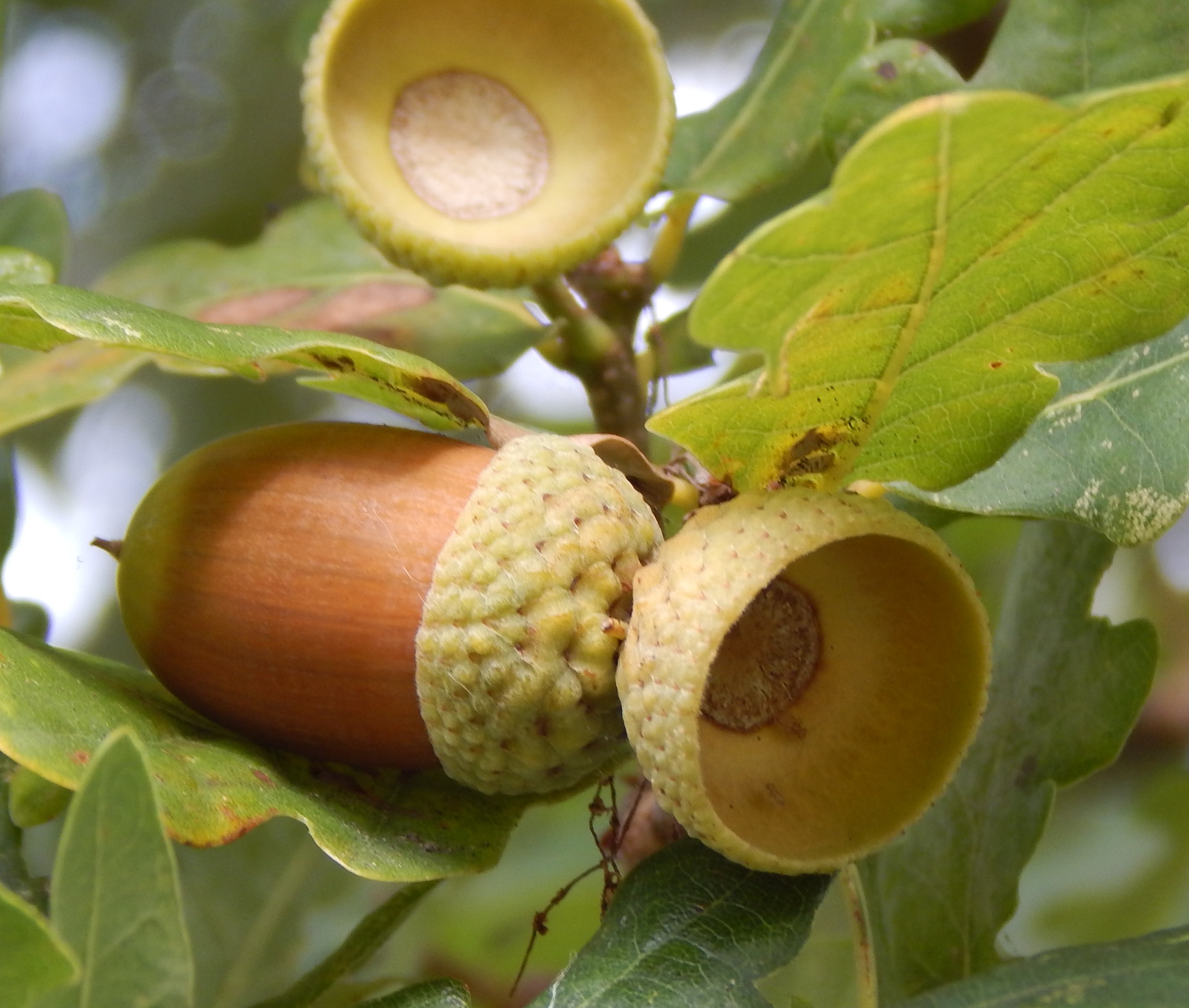
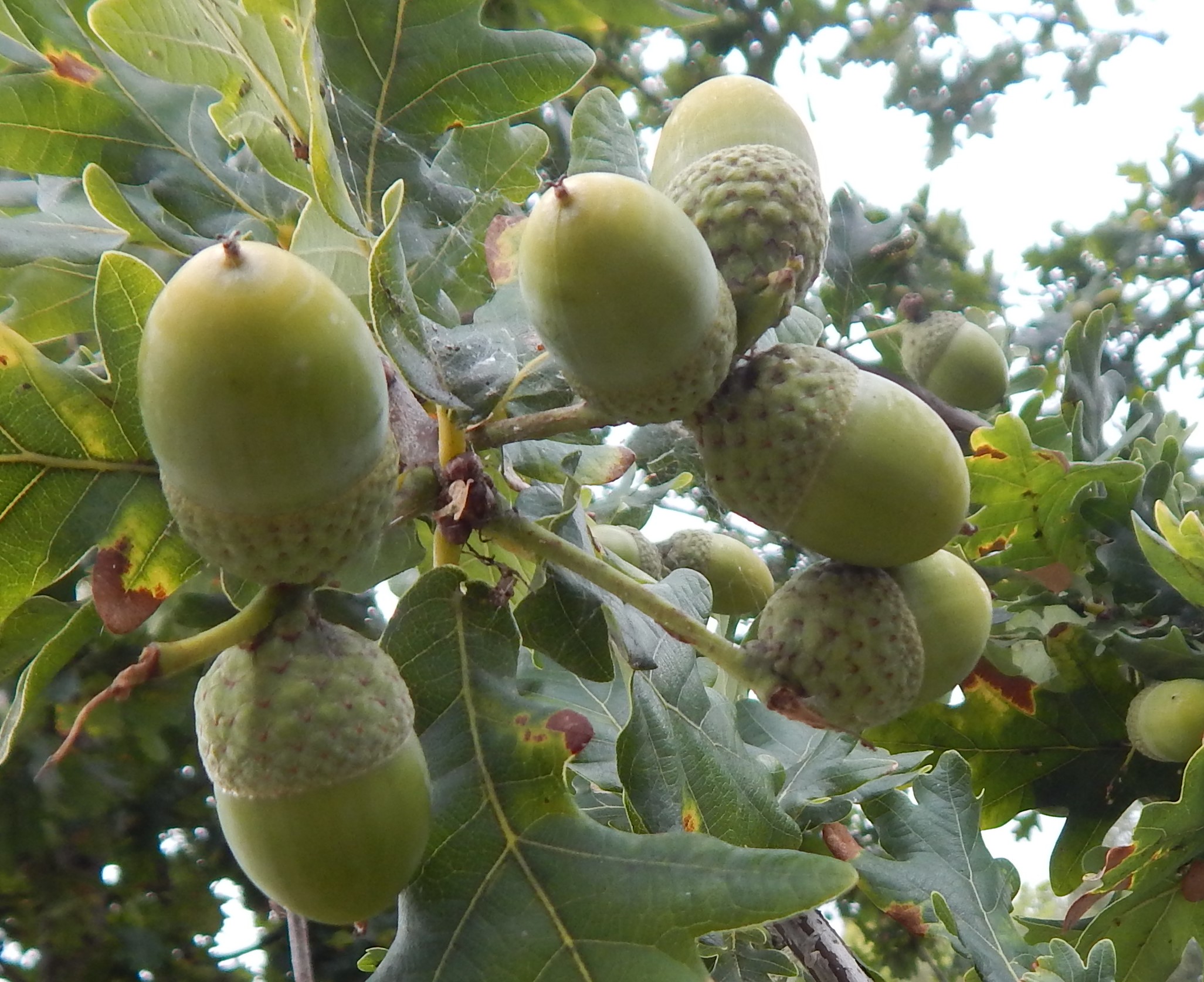
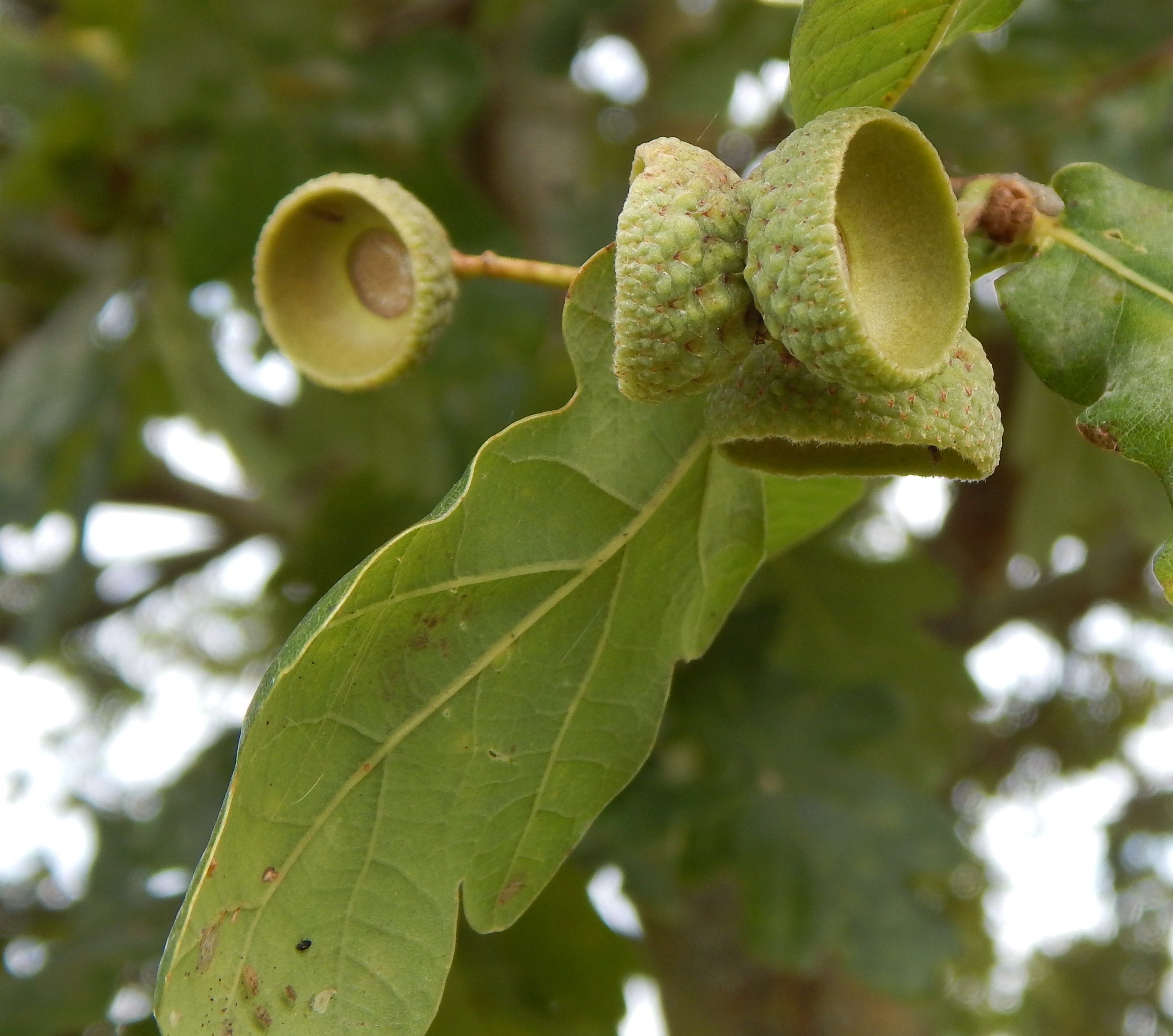
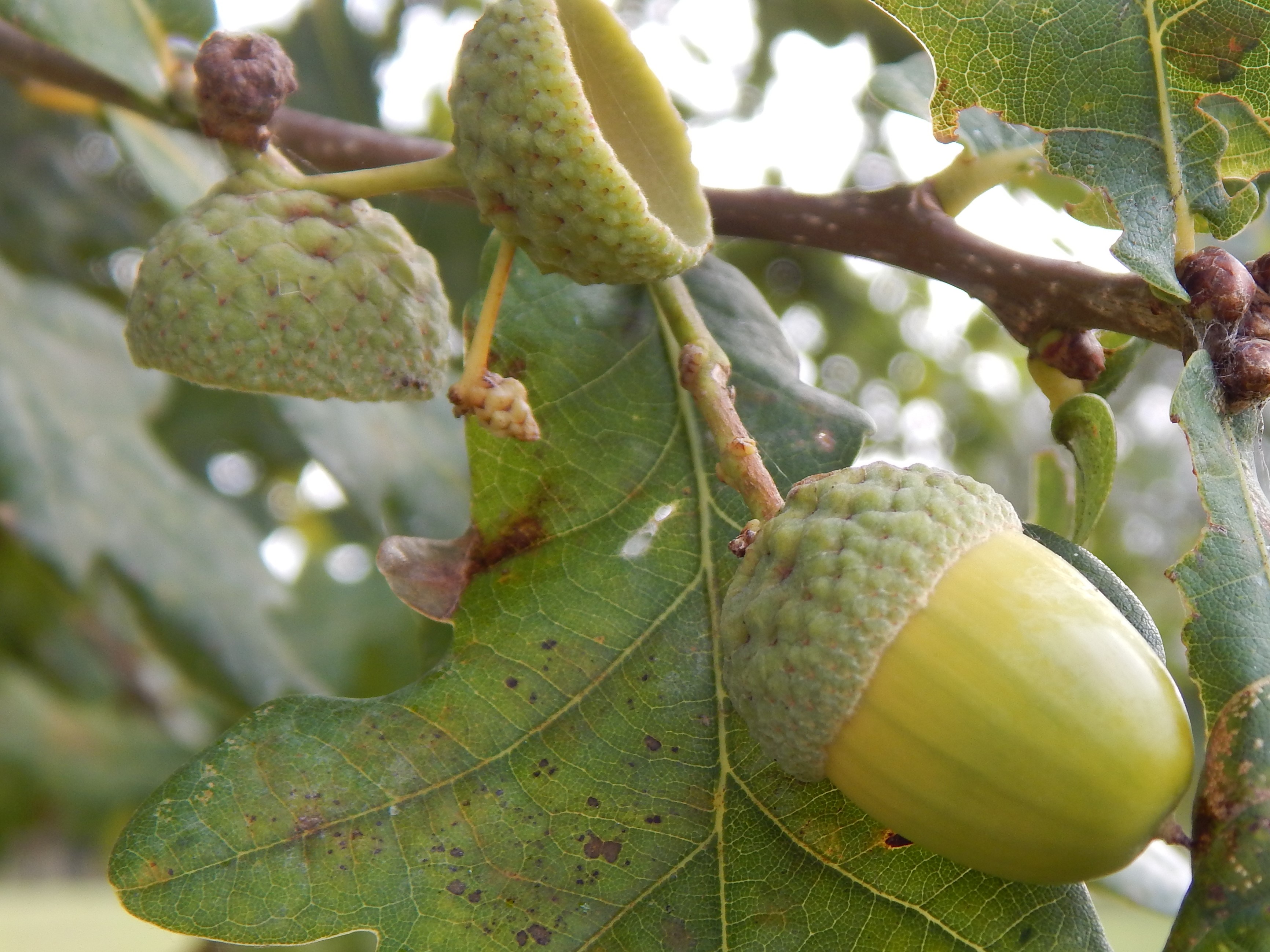


The Pedunculate Oak supports over 400 species of insects and the acorns provide food for [311] Squirrels and birds such as [159] Jays.
All the oak species in this blog are available as cultivated tress and all have several varieties and cultivars.
[B] Sessile Oak
I try not to use botanic terms but the biggest difference between Pedunculate Oaks and Sessile Oaks is in the leaf attachment to branches. Pedunculate Oaks have sessile leaves, directly attached without a stalk. Sessile Oaks have pedunculate leaves, attached with a short petiole. That’s not very helpful but the acorns are the other way round. Sessile Oaks have sessile acorns and Pedunculate Oaks have a connecting peduncle.
(Don’t ask me why but leaves have petioles or are sessile; flowers have pedicels or are sessile. Peduncle is used for an inflorescence or a fruit or sometimes a single flower.)
The Sessile Oak is also known as the Cornish Oak, the Irish Oak and the Durmast Oak. [Durmast may be a misreading of ‘dun mast’ referring to light brown acorns.] Its natural range is very similar to the Pedunculate Oak.
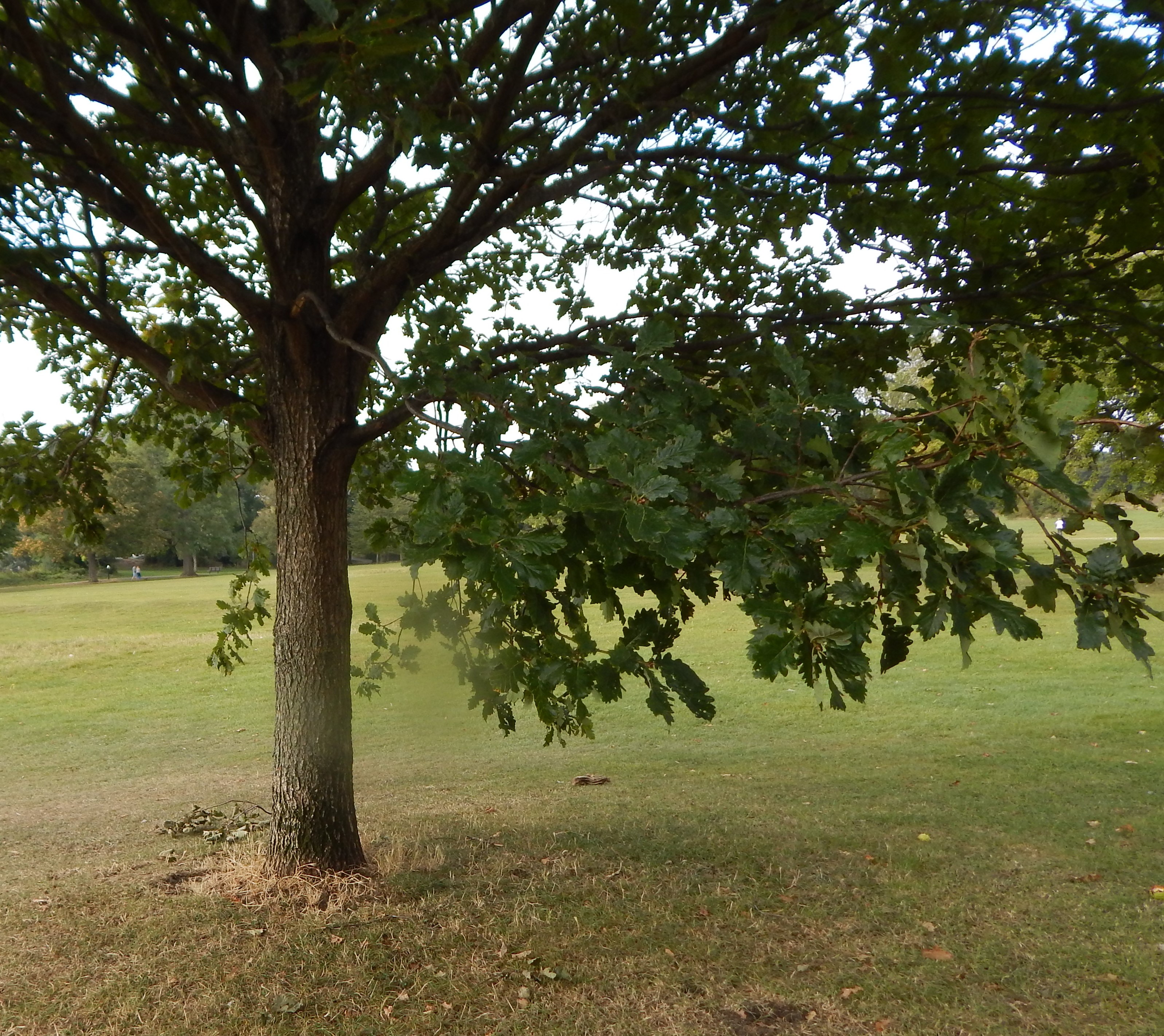
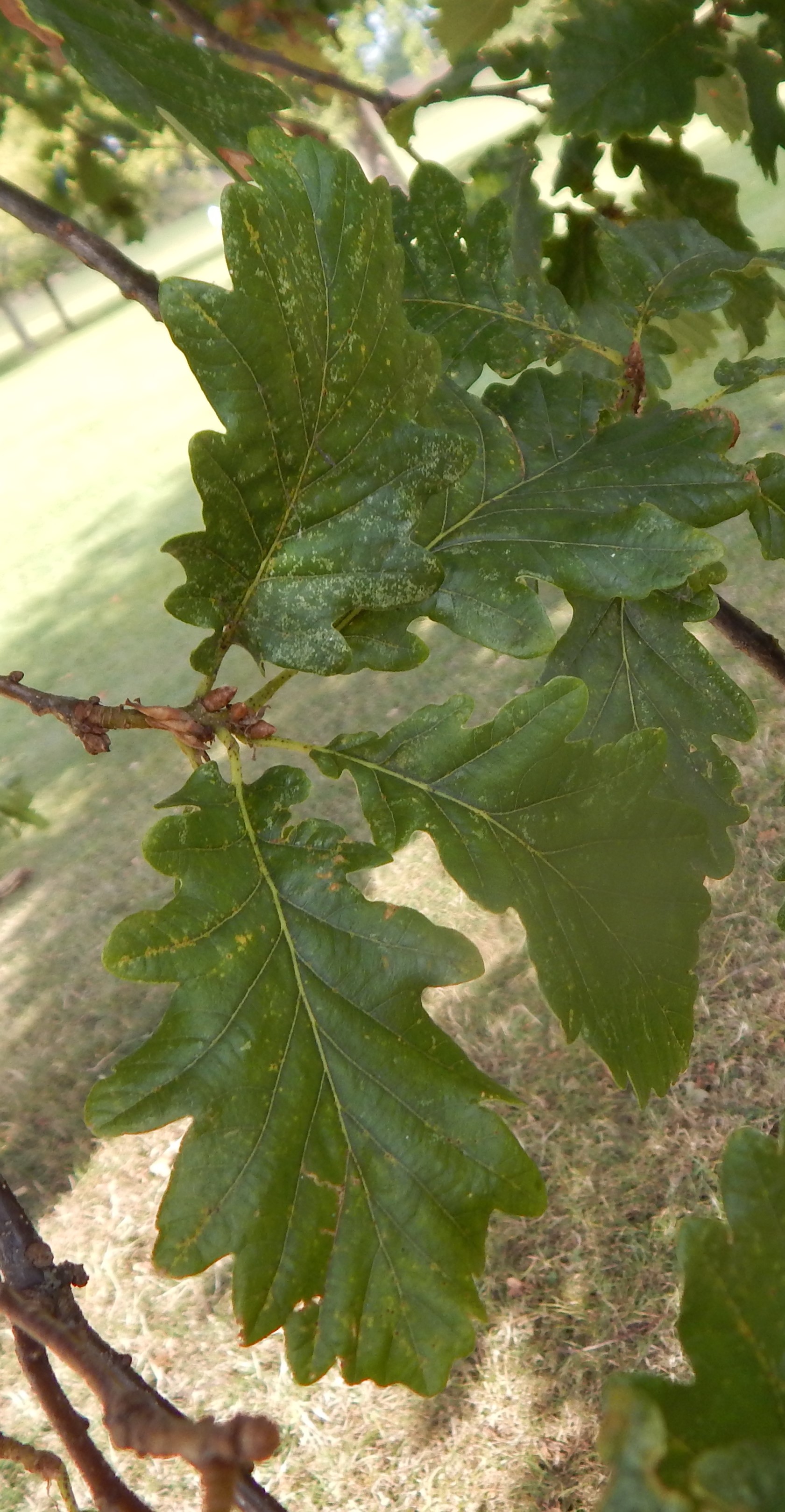


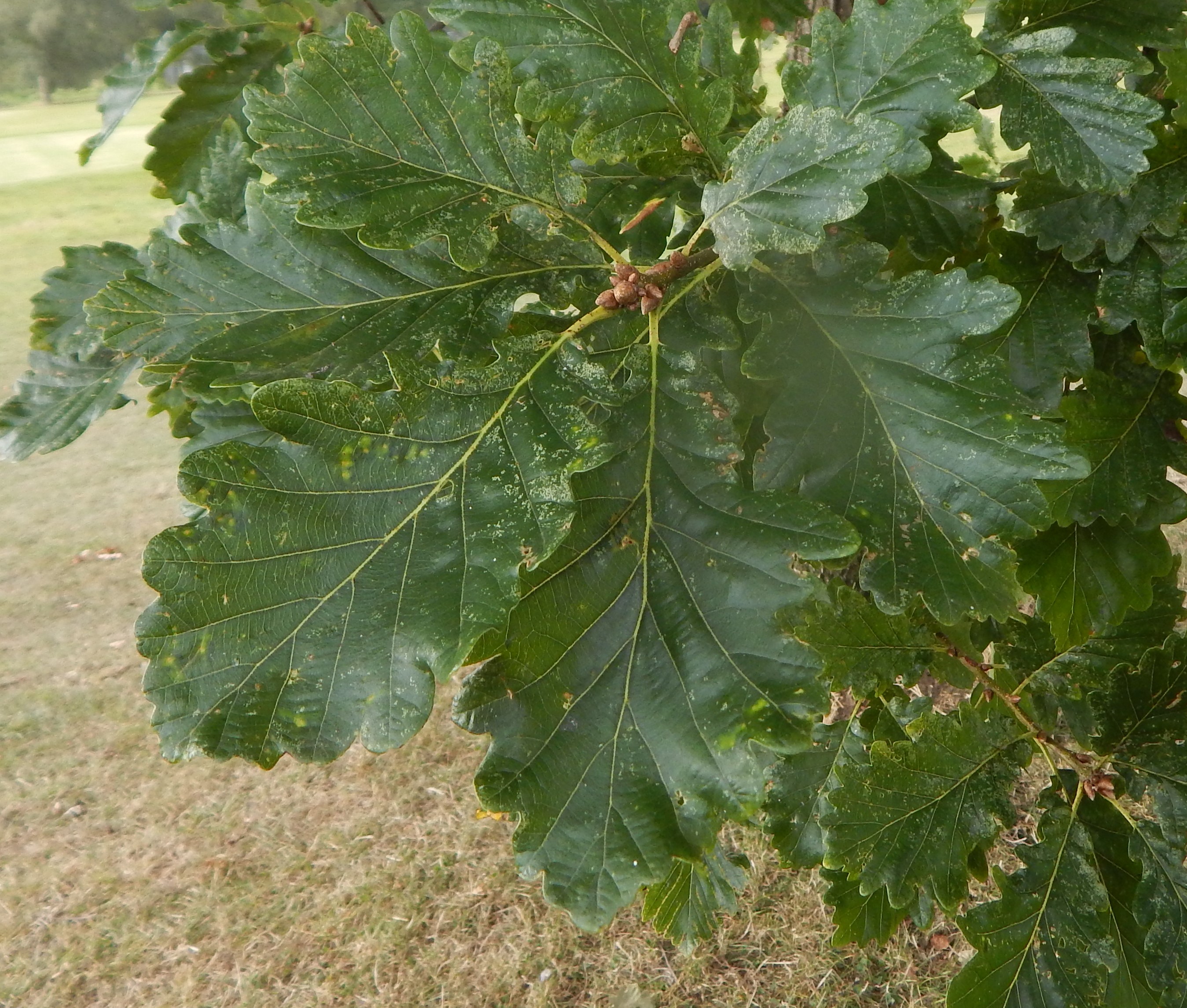
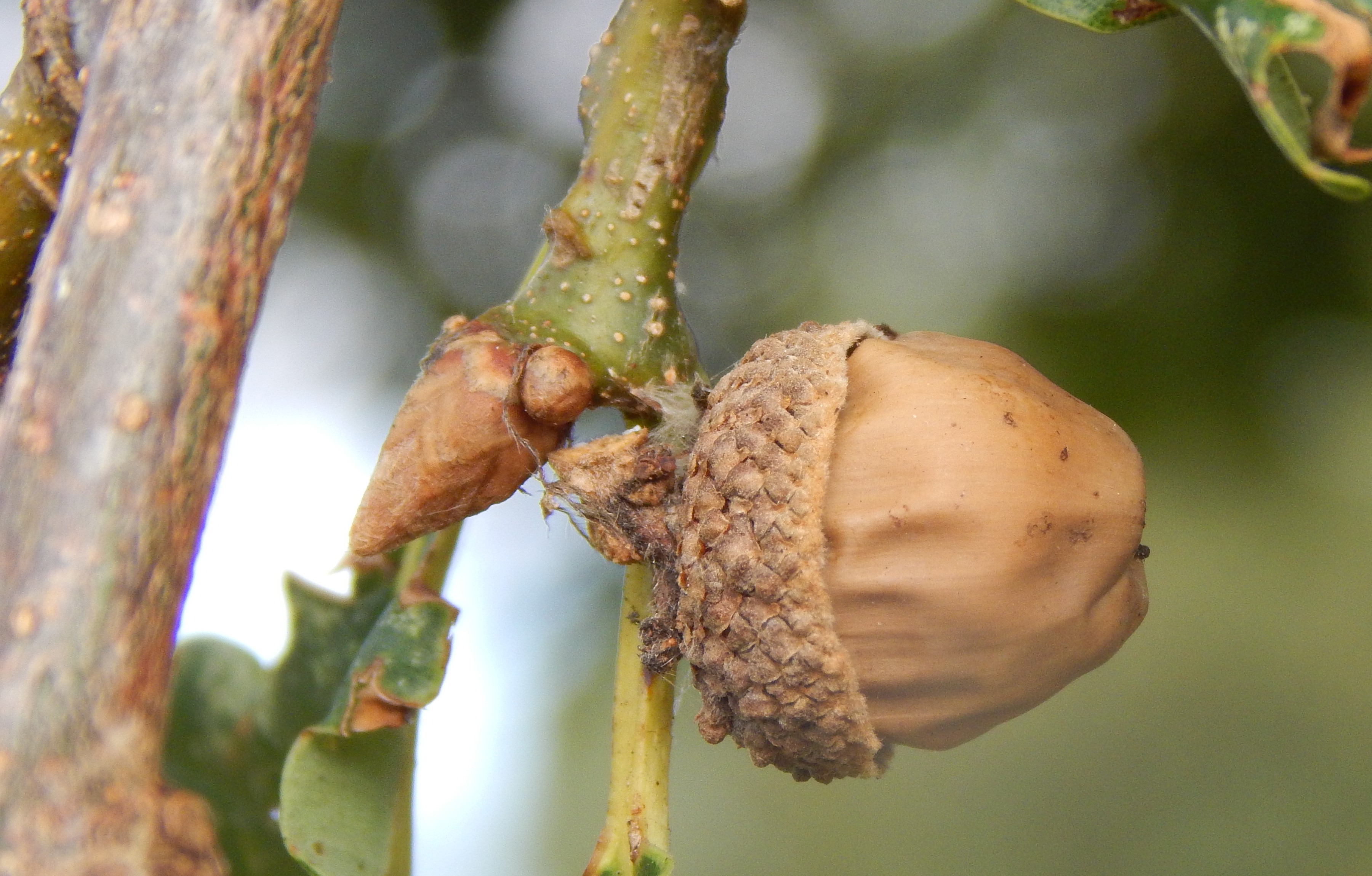
Quercus petraea has also been used as a source of timber.
Quercus robur and Quercus robaea share their native ranges and often hybridize naturally as Quercus x rosacea.
[C] Holm Oak
Quercus petraea, the Holm Oak, Holm-oak or Holly Oak is sometimes locally called the Evergreen Oak. Its native area consists of Italy, Spain and areas close to the shores of the western Mediterranean.
(Two other species are called the Holm Oak. Quercus agrifolia, also known as the Californian Live Oak, is an American species. Quercus rotundifolia, also known as the Ballota Oak, is mostly found in Spain and Portugal.)
Leaves of the Holm Oak are not lobe-shaped like other familiar oak species. They are thin pointed ovals, dark green and almost glossy above and lighter coloured, slightly furry, below. Younger leaves may have small points on the outside reminiscent of holly leaves. Flowers and fruits (acorns) are similar to other oak species.



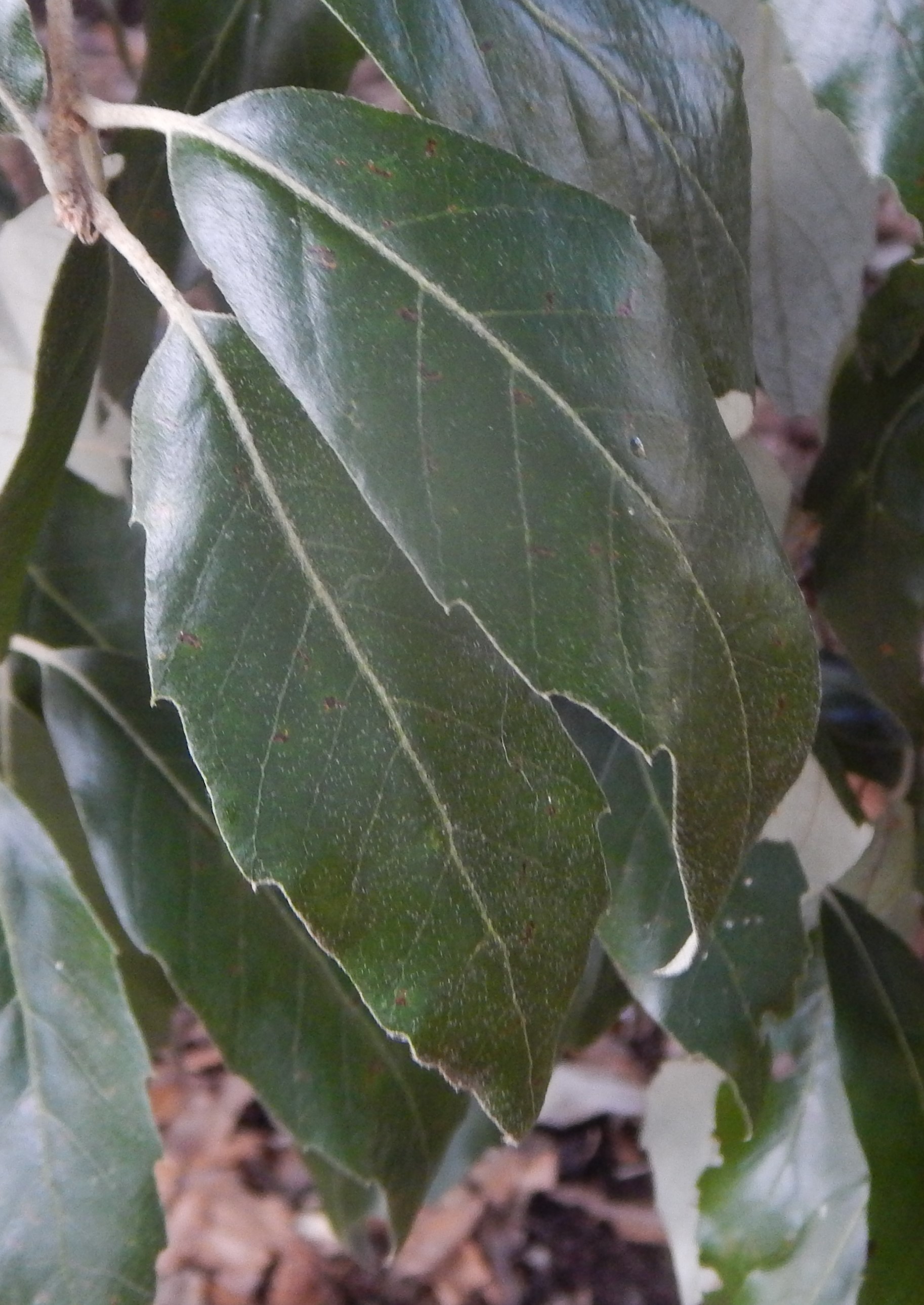

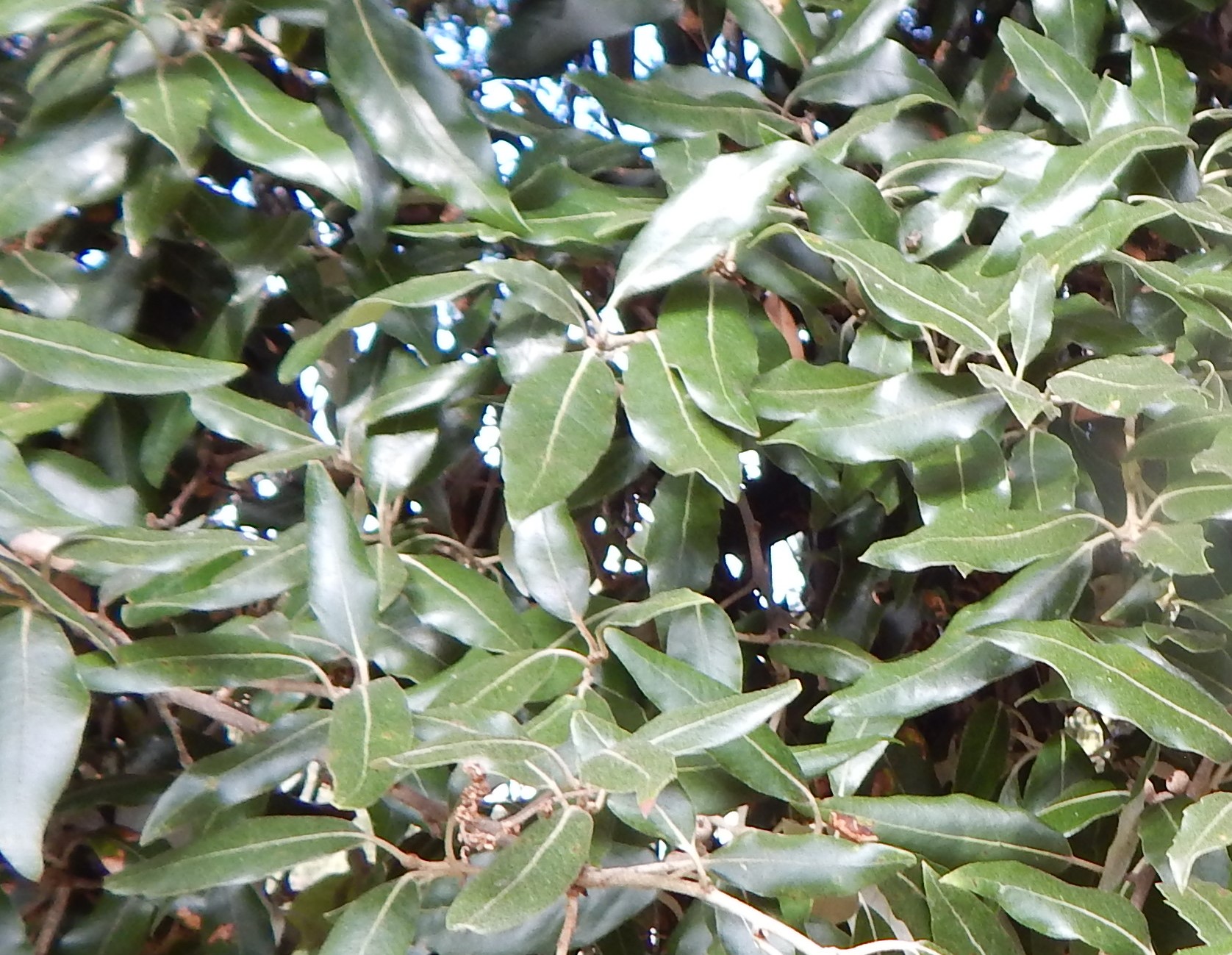

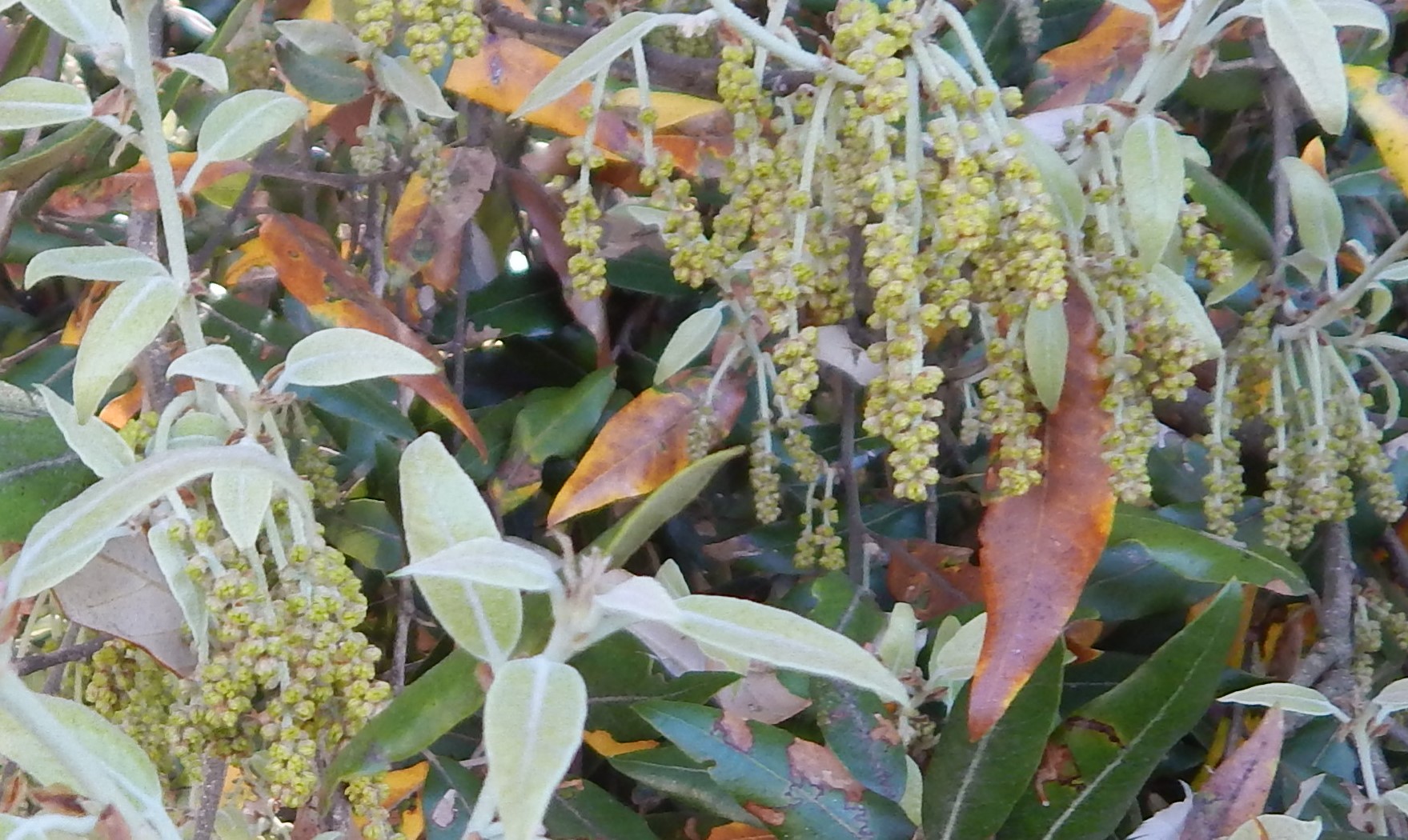

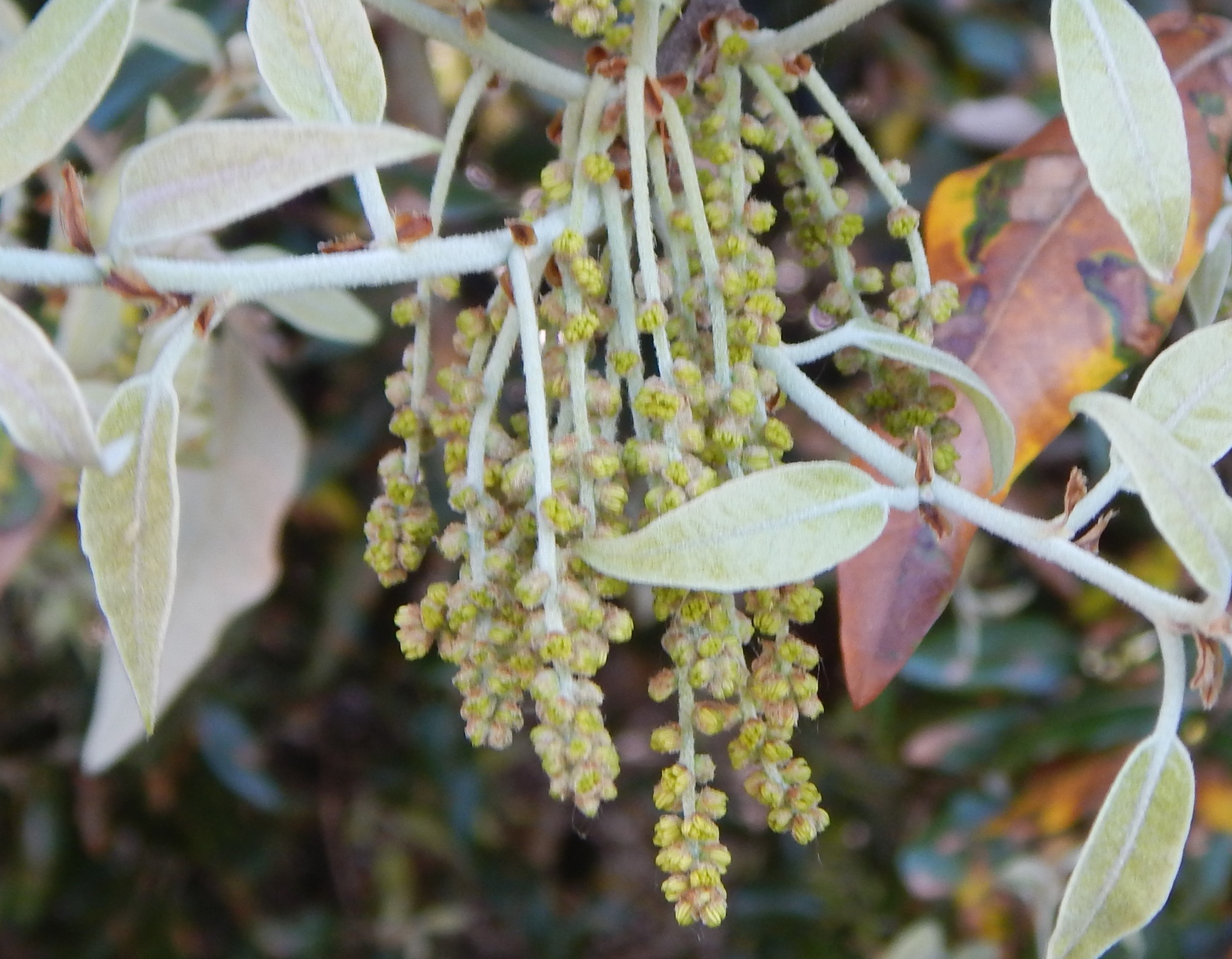
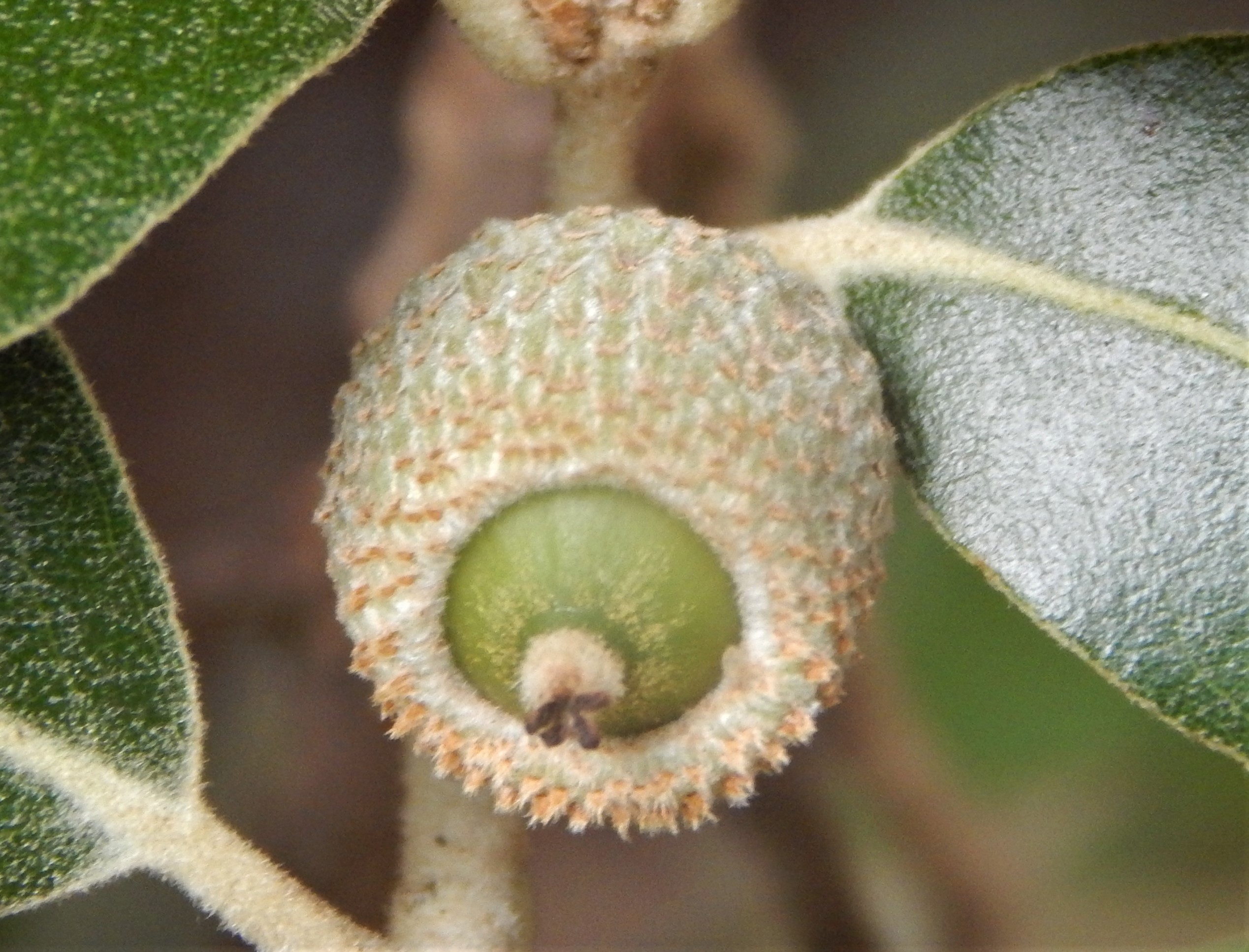
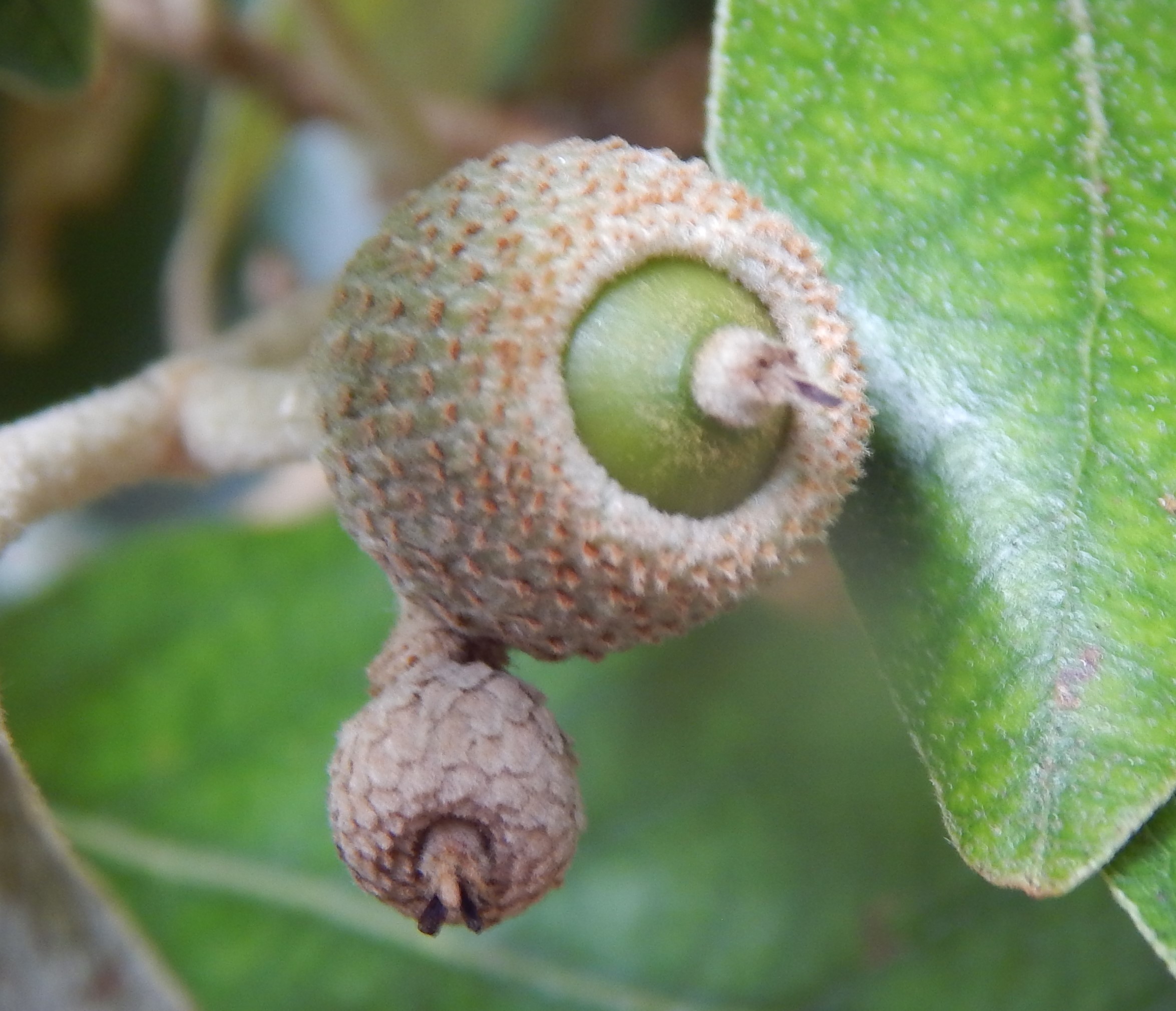
The Holm Oak is a popular tree in some parks and gardens because it provides dense shade cover. It is one of several species of Quercus that are evergreen. Evergreen species are spread throughout the subgenera and sections as a result of separate convergent evolution.
Other Notes
I am lucky enough to live near Pittville Park in Cheltenham, which has many trees about two hundred years old, including several impressive oak trees.
See also
I will look at the rest of the genus Quercus tomorrow.
